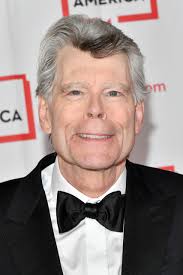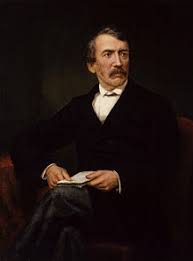Hi my dear friends. Are you fond of reading scaring novels? Do you usually watch mystery and horror films? Today we are going to know a bit more about Stephen King, the master of horror stories. For me, he is the best! I hope you'll like it!
Hola mis queridos amigos. ¿Sois aficionados a leer novelas de miedo? ¿Soléis ver películas de misterio y terror? Hoy vamos a saber un poco más sobre Stephen King, el maestro de las historias de terror. ¡Para mí, es el mejor! ¡Espero que os guste!
Info: from Speak Up magazine.
Photos: palech.org / amazon.es (2) / mty360.net / fotogramas.es / glamour.es
STEPHEN KING - THE ART OF SCARING PEOPLE
Stephen King, master of the horror genre, published his first novel, Carrie, in 1974. Since then he has published 59 more terrifying novels, which have sold 350 million copies worldwide. Many of his books have been adapted into films and he has won an impressive number of literary awards. King's latest book is The Outsider. It centres on the investigation into a seemingly wholesome baseball coach, who is accused of a terrible crime. As it is typical of King, the novel contains a deadly twist that catches the reader by surprise.
NON FICTION
Yet King has not only written fiction. In 2000 he published On Writing: A Memoir of the Craft, a memoir and manual that describes his experiences as a writer and offer advice to those who aspire to be one. It includes suggestions on how to narrate a good story, on the importance of observation and intuition, and why you should do it for the love and not for the money!
King also says that some things you can't teach; every writer develops his or her own style and method, for example. But, as he explained to young aspiring writers at an event held at the University of Massachussets in Lowell, it is important to develop an approach that keeps you motivated.
One time John Iriving was talking to a bunch of would-be writers and said that the first thing he does with a book is write the last line of that book but King likes to start with a little bit of an idea. The ideas come from different places, sometimes they stick around and you want to do something, sometimes they dont. But the idea is to start with something and just start to go with it.
FIRST-HAND INSPIRATION
King says that a writer must be both intuitive and flexible. The writer's life is to observe life, recognize a good idea when they see it, and then take it in a new direction. That is how Carrie was born.
Unusually, King often uses children as main characters. King defends that kids make as good main characters as adults, and he points out that there are still very few books written for grown-ups about children. What he really wanted to do with "It" was to write about how kids have a wider bandwidth when it comes to perception and belief, and the ability to accept things; and how, when we become grown-ups that field of vision starts to change and close down a little bit. What King really wanted to do in "It" was to create a bridge, a fictional and scary make-believe. Childhood is a scary time and he wanted to give adult readers a chance to relive those yeats as much as possible.
SCARE YOURSELF
It is commonly said that comedy is the most difficult genre to write, since each person has their own definition of humour. Horror can also be too subjective and too personal. King says that the writer should trust his or her own sense of fear and project that onto their text. King said that he wrote a book called PET CEMETERY and that he got pretty scared toward the end of that book because it was very black, and when he finished the book he put it in a drawer cause he thought nobody would want to read anything like that. But they did so...
But the time he scared himself the most, was while he was writing The Shining. He had rented a room in a house that was away from the kids, and he could go there for three hours a day and could work because it was peaceful and he would work for three hours and go home. And finally, he realized that the young kid, Danny Torrance, was going to walk to that room 217 and that there was a dead woman in the bathtub who wasn't really dead. King was working away, happy as a lark, and then one day he thought: "Five days to room 217." And then it was three days, and then it was one and then it was...he was in the room. And that was a very brilliant scene in terms of what was going on King's head. And he was very scared when he wrote that scene
BETTER THAN THERAPY
It's been more than forty years since King's first book hit the bookstores, but he still feels the buzz. For him, "writing isn't about making money; it's about enriching the lives of those who read your work, and enriching your own life."
Stephen King claims that writing is a great job. Wonderful. He says that he invents all the stories and people pay him for that! He just wants to say "Thank you everybody".
VOCABULARY
-SEEMINGLY WHOLESOME: aparentemente honesto -DEADLY TWIST: giro mortal. -GROWN-UPS: adultos -MAKE-BELIEVE: fantasía -BATHTUB: bañera -HAPPY AS A LARK: feliz como una perdiz -COME ACROSS: dar a entender. -FEEL THE BUZZ: sentir la emoción. -TO MAKE UP: inventar.



















